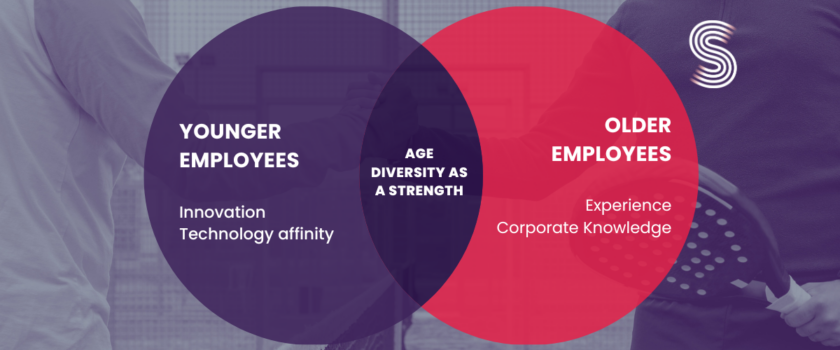
Age Diversity as an Asset: Effectively Managing the Generational Shift
In today’s professional landscape, an unprecedented phenomenon is unfolding: the largest generation gap in history. For the first time, we are witnessing a workplace where Traditionalists, Baby Boomers, Generation X, Millennials, and Generation Z are working together, making the workforce more age-diverse than ever.
This surge in age diversity is particularly prominent in Europe, where the active participation of 55-64 year-olds in the workforce increased by 40 per cent in 2022. As people live longer and retirement ages continue to rise, the prevalence of older employees in various industries—including the fast-paced sports goods sector—is becoming more significant. At the same time, Gen Z will be defining 30% of the workforce by 2030.
This diversity in age presents a complex tapestry of challenges and opportunities. On one hand, differing attitudes and communication styles among these groups can lead to misunderstandings and conflicts. On the other hand, this unique blend of generations offers a rich reservoir of knowledge, experience, and innovation, waiting to be tapped into.
The Power of Age Diversity in the Sports Industry
Age diversity is more than a buzzword – it’s a catalyst for innovation and growth. In the fast-paced world of sports goods, where trends arrive today and might be gone tomorrow, the blend of older employees’ wisdom and the vibrant dynamism of younger teams proves beneficial. The data is clear: older workers are not just a support; they are the heart of companies, and their significance is set to increase. For the sports industry, this means that a team combining young and old can set trends while maintaining proven strategies.
Thus, companies face the task of adapting to optimally utilize the diverse skills and experiences of different age groups and to retain their staff long term. This requires strategic realignment and targeted measures.
Strategies for an Age-Friendly Work Culture
Flexible Working Models: These allow a balanced work-life harmony for all age groups. Regular staff can benefit from options to align their work hours with individual needs, while older employees, possibly part-time retirees, can continue to contribute their expertise without fully retiring.
Mentor Programs: Integrating mentorship programs effectively promotes the exchange of knowledge between generations.
A prime example is adidas’s CSR Leadership Group, where selected executives shape the next generation – they develop and inspire. Such programs make experienced staff mentors for their younger colleagues, transferring technical knowledge and company culture. In the dynamic sports goods industry, this ensures valuable knowledge retention while nurturing the ground for fresh innovations.
Health Promotion and Age-Appropriate Workplaces: Ergonomic workplaces, fitness programs, and adjusting job demands to employees’ physical capacity are essential. They foster the health and well-being of all generations and maintain work capability into older age.
Continuing Education: Training provides a platform for older and younger staff to learn together. From digital skills to leadership training, it ensures everyone, regardless of age, stays current. Training ensures:
- No digital divide arises between younger and older employees
- A common language and understanding of work and company goals
- Non-work related relationships are built, fostering a more inclusive work environment
Inclusion and Diversity: To effectively manage the generational shift, sports companies must not only support but live an inclusive and diverse corporate culture. This means embracing different perspectives and life experiences as genuine assets. Unconscious Bias Training is a step towards a work environment that actively encourages intergenerational collaboration.
Stronger Together: The Essential Nature of Promoting Collaboration
The generational shift isn’t a distant theory – it’s a reality hitting the sports goods industry head-on. In a field where teamwork and innovation are vital, uniting different generations can lead to unbeatable synergy. Instead of viewing it as an obstacle, we can leverage it as a strategic advantage. Companies investing in flexible work hours, health promotion, continuous education, and above all, fostering collaboration between generations, are not just preparing for demographic change. They are positioning themselves as leaders in a market that never stands still.

Share
Facebook
Twitter
LinkedIn
Telegram
Tumblr
WhatsApp
VK
Mail